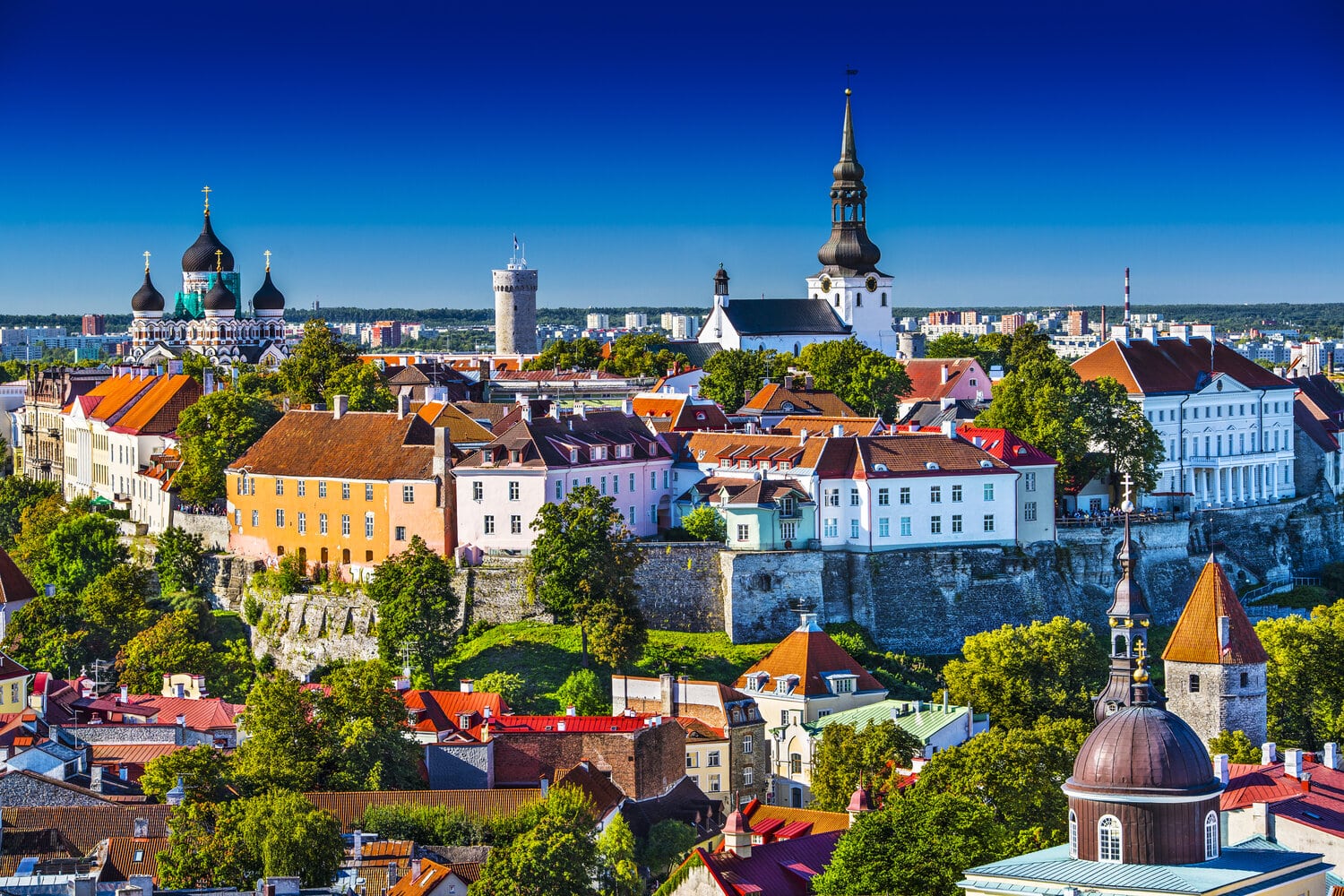



Tallinn, Estonia’s capital on the Baltic Sea, is the country’s cultural hub. It retains its walled, cobblestoned Old Town, home to cafes and shops, as well as Kiek in de Kök, a 15th-century defensive tower. Its Gothic Town Hall, built in the 13th century and with a 64m-high tower, sits in historic Tallinn’s main square. St. Nicholas Church is a 13th-century landmark exhibiting ecclesiastical art.
Summer (June to August): The best time to visit, with long daylight hours, mild temperatures (15–25°C), and vibrant events like the Medieval Days and Tallinn Maritime Days.
Winter (December to February): A magical time with Christmas markets, snowy landscapes, and a cozy medieval atmosphere. Best for those who enjoy winter charm.
Spring (April to May) & Autumn (September to October): Fewer tourists, pleasant weather, and beautiful seasonal changes make these months a great alternative to summer.
By Air: Tallinn Airport (TLL) is well-connected to major European cities.
By Ferry: Regular ferries from Helsinki (2 hours), Stockholm (overnight), and St. Petersburg.
By Train/Bus: Buses run from Riga, Vilnius, and St. Petersburg. No direct international train connections, but local trains operate within Estonia.
Tallinn Old Town – A UNESCO-listed medieval town with cobbled streets, ancient walls, and charming buildings.
Alexander Nevsky Cathedral – A stunning Russian Orthodox cathedral with intricate interiors.
Toompea Castle & Viewing Platforms – Offers panoramic views of the city.
Kadriorg Palace & Park – A baroque palace built by Peter the Great, housing an art museum.
Tallinn Town Hall Square – The heart of the Old Town, especially magical during Christmas.
St. Olaf’s Church – Once the world’s tallest building, offering great city views.
Lennusadam Seaplane Harbour – A fascinating maritime museum with interactive exhibits.
Telliskivi Creative City – A trendy area with street art, cafes, and local design shops.
Kumu Art Museum – Estonia’s top contemporary and classic art museum.
Patarei Prison Museum – A haunting yet intriguing Soviet-era prison turned museum.
Explore the Old Town – Wander through medieval streets, visit historic sites, and enjoy the fairytale-like atmosphere.
Climb to the top of St. Olaf’s Church – Get the best panoramic views of the city.
Visit Telliskivi Creative City – A hipster area filled with street art, indie shops, and cozy cafes.
Relax at Kadriorg Park – Enjoy nature and visit Kadriorg Palace and its museums.
Take a day trip to Lahemaa National Park – Experience Estonia’s stunning coastal landscapes, forests, and waterfalls.
Discover the KGB Museum – Learn about Soviet-era espionage at the Hotel Viru KGB Museum.
Visit the Seaplane Harbour Museum – Explore historic ships, submarines, and interactive maritime exhibits.
Try Estonian sauna culture – Visit a traditional Estonian sauna for a relaxing experience.
Go on a ghost tour – Hear spooky tales and legends about Tallinn’s haunted history.
Visit the Balti Jaam Market – Shop for local crafts, fresh produce, and vintage items.
Luxury:
Schlössle Hotel – A 5-star boutique hotel in the Old Town with a medieval charm.
Hotel Telegraaf – A historic luxury hotel with a spa and gourmet dining.
Mid-Range:
Hestia Hotel Kentmanni – Modern and stylish with a spa, located near the Old Town.
Savoy Boutique Hotel – Cozy and elegant, right in the heart of the city.
Budget:
Viru Backpackers Hostel – A friendly, budget-friendly hostel in the Old Town.
Fat Margaret’s Hostel – Great for budget travelers with a relaxed atmosphere.
Traditional Estonian Cuisine:
Rataskaevu 16 – Famous for local dishes like elk stew and black bread.
Olde Hansa – A medieval-themed restaurant serving authentic Estonian food.
Modern & Trendy:
NOA Chef’s Hall – One of Tallinn’s best fine dining spots with a sea view.
Rae Meierei – A stylish eatery known for its cheese and delicious local dishes.
Casual & Budget-Friendly:
Kompressor – Famous for massive and affordable Estonian pancakes.
III Draakon – A medieval tavern offering rustic soups and pies for cheap.
Street Food & Cafés:
Balti Jaam Market – Great for street food like dumplings, pastries, and grilled meats.
Maiasmokk Café – Estonia’s oldest café, perfect for coffee and marzipan treats.
Language: Estonian is the official language, but many people speak English, Russian, and Finnish.
Traditions: Tallinn has a strong medieval heritage, seen in festivals, music, and architecture.
Sauna Culture: Estonians love their saunas, often followed by a dip in an ice-cold lake in winter.
Pagan & Folk Influence: Estonians have a deep connection to nature, with old folk songs and traditions still celebrated.
Christmas Magic: Tallinn’s Christmas market is one of the best in Europe, with a real medieval holiday vibe.
Tipping: Tipping is appreciated but not mandatory. A 5–10% tip in restaurants is common.